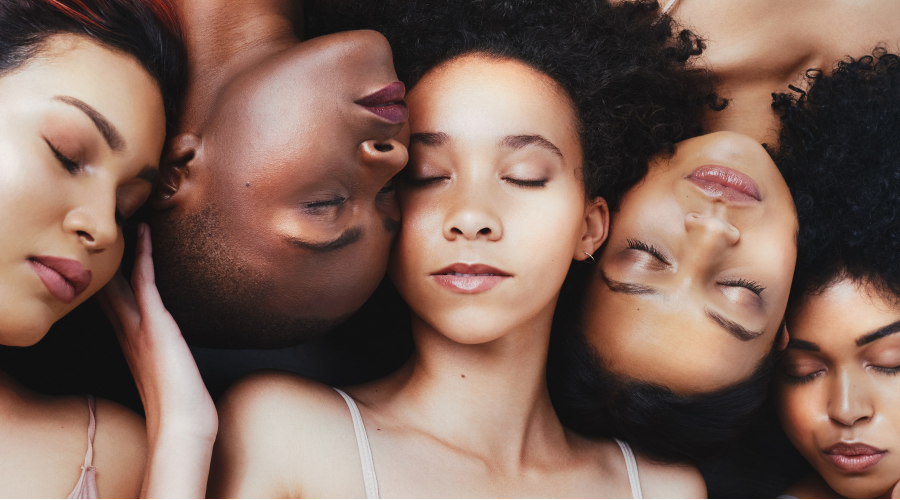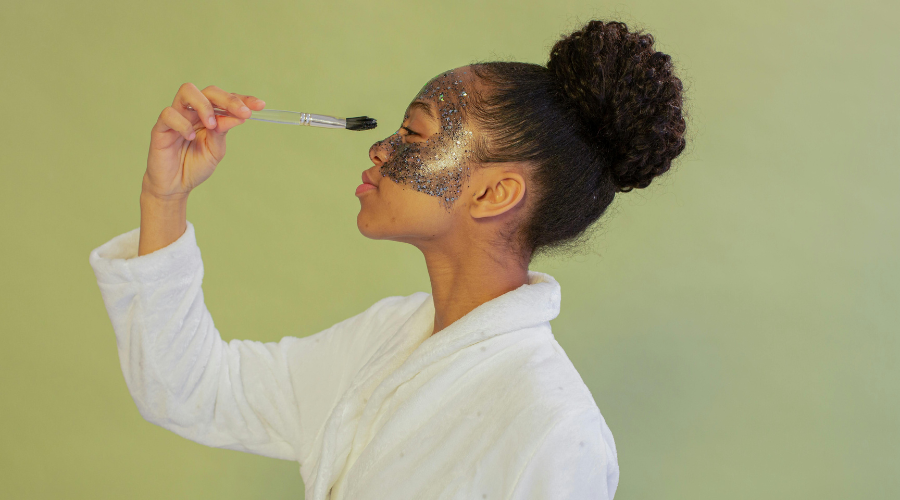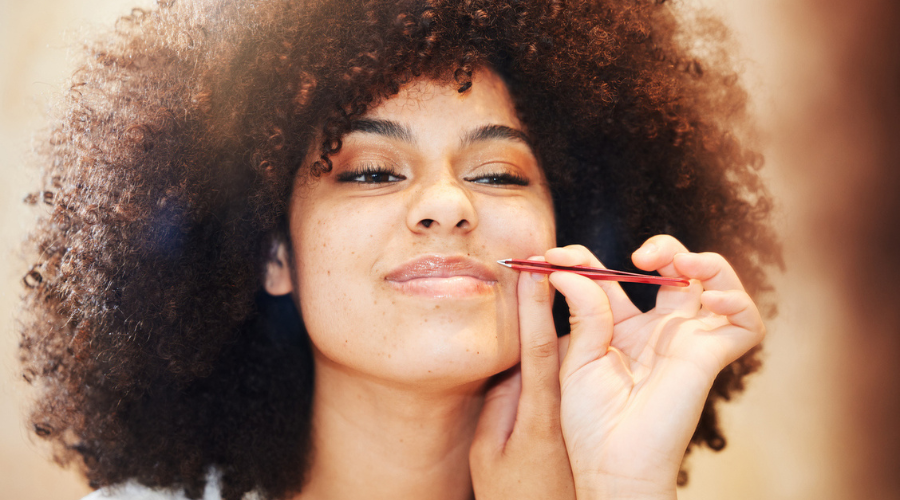Looking in the mirror at your beautiful skin, do you really know what gives it that gorgeous glow? You may have heard some myths and misconceptions about melanin over the years. Don't worry, learning the truth about this pigment that makes your skin so special is easier than you think. In just a few minutes, we'll debunk those myths and help you embrace the one-of-a-kind beauty of your skin. Get ready to discover what melanin is, what it does, and why it makes you beautifully you. When we're done, you'll be ready to rock your unique skin tone with confidence and pride.
What Is Melanin and How Does It Affect Skin Tone?
Melanin is the pigment responsible for skin tone
Melanin is a natural pigment found in our skin, hair, and eyes. It determines your skin tone and how much you tan. People with high amounts of melanin tend to have darker skin, while those with less melanin have lighter skin. Melanin protects against UV radiation by absorbing the sun's rays.
Genetics largely determine your melanin levels
Your skin tone is primarily determined by genetics. The amount of melanin you have is based on the melanin levels of your biological parents. Genes control how much melanin your body produces and distributes in your skin. Environmental factors like sun exposure can also affect melanin to some extent, causing your skin to darken or lighten over time. However, genetics is the primary factor controlling your natural skin tone.
There are two types of melanin: eumelanin and pheomelanin
Eumelanin produces shades of brown and black, while pheomelanin produces shades of red and yellow. The combination of eumelanin and pheomelanin levels in your skin determines your natural skin tone and how much you tan. People with high eumelanin tend to have darker skin and tan more easily. Those with more pheomelanin usually have lighter skin and burn more easily in the sun.
Your unique skin tone is beautiful as it is. Melanin diversity is what makes humanity so vibrant and colorful. Love the skin you're in!
Common Myths and Misconceptions About Melanin
Melanin is one of the most misunderstood parts of human diversity. Let's debunk some common myths and embrace our unique skin.
Melanin determines skin color but not race.
While the amount of melanin in your skin does influence skin tone, it alone does not determine someone's race or ethnicity.
Dark skin is not inherently better at preventing sun damage.
Although melanin does provide some sun protection by absorbing UV radiation, no skin tone is immune to the sun's effects. Everyone, regardless of skin color, needs to practice sun safety and get checked for skin cancer.
There are no different types of melanin.
Melanin is melanin - it's the same brown pigment in all human skin. The amount, type of distribution, and size of melanin granules is what create variations in skin tone. There are no separate categories of melanin for different races.
Skin tone is not an indicator of health or diet.
The amount of melanin in your skin is primarily determined by genetics, not health or diet. While UV exposure and certain nutrients like vitamin D can influence melanin production to some extent, skin tone itself does not indicate how healthy or well-nourished someone is.
With knowledge and understanding, we can move past myths and appreciate our skin - in all its diverse beauty. Melanin binds us together as humans, no matter what shade we come in.

Embracing Your Unique Skin Tone and Melanin Level
Your natural skin tone is determined by the amount of melanin produced in your body. Melanin is the pigment that gives skin its brown or black color and helps protect against skin damage from the sun. The more melanin you have, the darker your skin will be.
Accept What You're Born With
There’s no “ideal” amount of melanin or perfect skin tone. Learn to appreciate the skin you're in. Your natural skin tone is not something you can or should want to change. Embrace your unique qualities - they make you who you are.
Myths and Stereotypes
Unfortunately, stereotypes and myths about skin tone persist in society. Don't believe the hype. All skin tones are normal and beautiful. Your worth isn't defined by your skin color.
Celebrate Diversity
There are countless natural skin tones. We should embrace diversity and promote inclusion for people of all colors. Your skin tone only reflects the amount of melanin you were born with, not your character, intelligence or worth as a person.
Protect Your Skin
No matter your natural skin tone, it's important to protect your skin from sun damage by wearing sunscreen, hats, and limiting sun exposure during the middle of the day. Sun damage and skin cancers affect people of all skin tones. Caring for your skin and maintaining its health will keep you feeling confident in who you are.
Your natural skin tone is as unique as your fingerprint. Learn to fully accept and appreciate the skin you're in. Promote inclusion for people of all skin tones. And always take good care of your skin - it's the only one you've got!

Managing Hyperpigmentation and Uneven Skin Tone
Hyperpigmentation, dark spots, and uneven skin tone are common concerns for many. The good news is there are several ways to help fade these issues and promote an even, glowing complexion.
Exfoliate Regularly
Exfoliating removes the outer layer of dead skin cells from the surface of your skin. This helps fade hyperpigmentation by speeding up cell turnover and allowing new, fresh skin to emerge. Use a gentle exfoliant, like glycolic acid or fruit enzymes, 2-3 times a week to slough off dead skin without irritation.
Use Brightening Ingredients
Ingredients like hydroquinone, kojic acid, azelaic acid, and vitamin C are highly effective for lightening dark spots and evening out skin tone. Look for over-the-counter creams, serums and masks containing these brightening agents and use as directed. For best results, use a product with at least one of these ingredients daily.
Protect From the Sun
Sun exposure is a leading cause of hyperpigmentation and skin discoloration. Be diligent about wearing broad-spectrum sunscreen with an SPF of at least 30 every day, especially when outside. UV protection will prevent further skin darkening and allow brightening treatments to work better. Limit sunbathing and tanning bed use as well.
Consider Professional Treatments
For stubborn hyperpigmentation, professional treatments may provide better results. Options like chemical peels, microdermabrasion, and laser therapy work by removing the outer layers of skin to stimulate new cell growth and collagen production. They can significantly lighten dark spots and brighten skin tone. See a dermatologist for recommendations based on your skin type and concerns.
With regular exfoliation, targeted brightening ingredients, sun protection, and possibly professional treatments, you can effectively manage hyperpigmentation and achieve smooth, even-toned skin. Be patient and consistent, as it can take 4 to 6 weeks of regular use to see significant improvements in skin tone and the fading of dark spots. But the results will be well worth it!
Melanin and Skin Health FAQs
Is melanin good or bad for your skin?
Melanin itself is neither good nor bad. It’s a natural pigment in your skin that gives it color and helps protect you from UV radiation. However, too much or too little melanin can impact your skin health. An excess of melanin can lead to areas of hyperpigmentation, while a lack of melanin increases your risk of sun damage and skin cancer. The key is finding the right balance for your unique skin tone.
Can you increase your melanin?
Yes, there are a few ways to boost your melanin production. Spending more time in the sun or using tanning beds will stimulate your melanocytes to produce more melanin, but this also increases your risk of skin damage and aging. A safer option is to use self-tanning lotions and sprays that chemically react with your skin to create a tanned appearance without the UV exposure. You can also talk to a dermatologist about medical treatments like laser therapy to target specific areas of hypopigmentation.
Do some races have more melanin than others?
Melanin levels vary naturally among ethnic groups based on genetics and evolution. Those with ancestors closer to the equator typically have higher amounts of melanin. For example, individuals of African, Indian, Southeast Asian, Pacific Islander, and indigenous American descent tend to have higher melanin levels relative to those of European descent. However, there is a wide range of natural skin tones within each population.
Your melanin level is unique to you based on your own genetic background and skin health needs. The most important thing is embracing and protecting the skin you’re in by avoiding excessive sun exposure, using proper skin care, and consulting with a dermatologist about any concerns. Focusing on skin health and self-care will help ensure your natural glow shines through at any melanin level.
So remember, melanin is an amazing natural substance that gives your skin its color and protects you from the sun's harmful rays. Even if society tries to tell you otherwise, your skin tone is beautiful just the way it is. Embrace your unique melanin levels, care for your skin properly, and remember that we all have more in common than we have differences. At the end of the day, we're all humans under the same sun. Love the skin you're in, and let your inner light shine through.



